A Salmon Life
It is exiting to follow the life stages of a salmon, from a small egg to a fully-grown fish. In this development, many great changes occur, both in appearance, behavior and the characteristics of the fish. The life of a salmon begins in freshwater, but as it grows, its habitat will change, until it finally reaches adulthood and life in the marine environment. How is this possible?
In salmon farming it takes 2-3 years from the egg hatches to the salmon reach slaughter weight. Here you can explore the development of a salmon, from egg and yolk-sac fry - to parr, smolt and adult fish.
Broodstock
Broodstock
The broodstock of salmon are the parents of the next generation of fish. These parents are farmed salmon that grow quickly and have strong immune systems. By choosing broodstock with the right characteristics for aquaculture, it will give the next generation similar features. This is called breeding. Since the 1970s, salmon farmers have systematically chosen the best broodstock for use in aquaculture. This is the reason why the salmon is well adapted to a life in aquaculture farms.
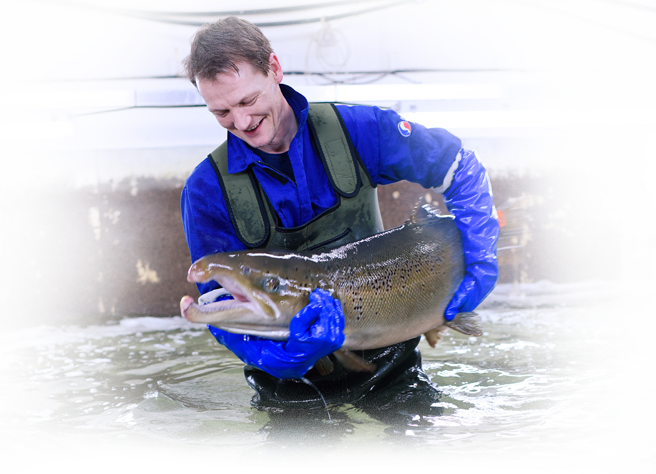
Egg
Egg
Salmon eggs can be compared with the size of a pea but is pretty big compared with other fish species. The fertilization occurs when the egg and the sperm (milk) mixes in the freshwater. In farming, the fertilized eggs are placed in sylinders, and now the transformation start from a single-cell to a hatching ready yolk-sac fry.
Click on the arrow to the right to learn more about the amazing development of the first weeks of a salmon life.
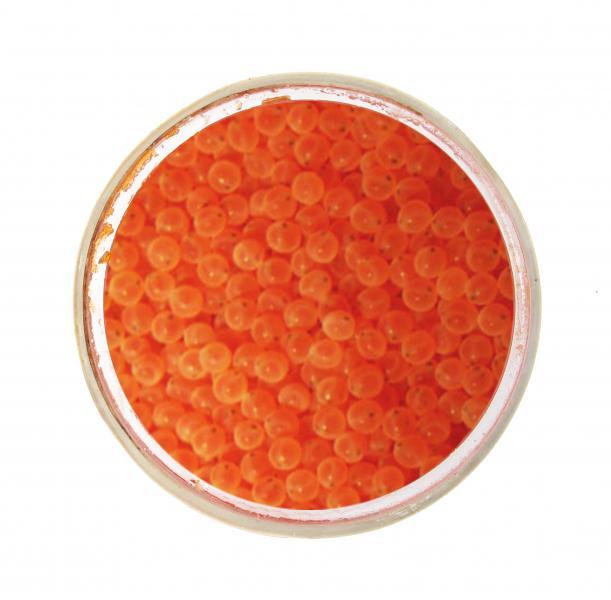
Egg
Day 1
The day after fertilization, the first cell becomes visible.
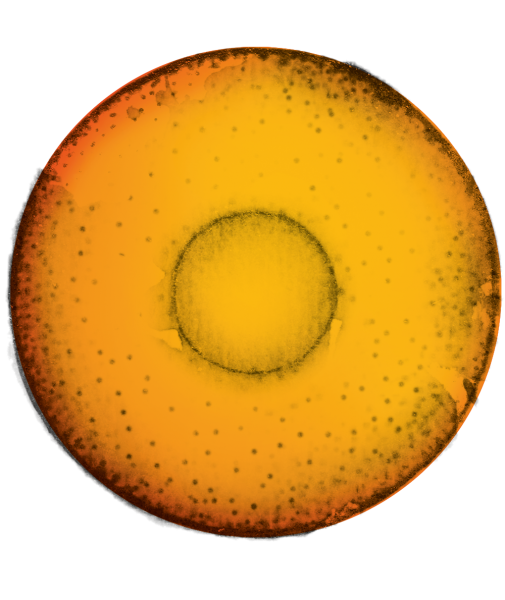
Egg

Day 2
After two days, the first cell divisions have started; first multiplying to 2 cells, following synchronous division of 4,8,16 and 32 cells. At this stage, all the cells look exactly the same.
Egg
Day 14
Fourteen days post fertilization, we start to see the spine.
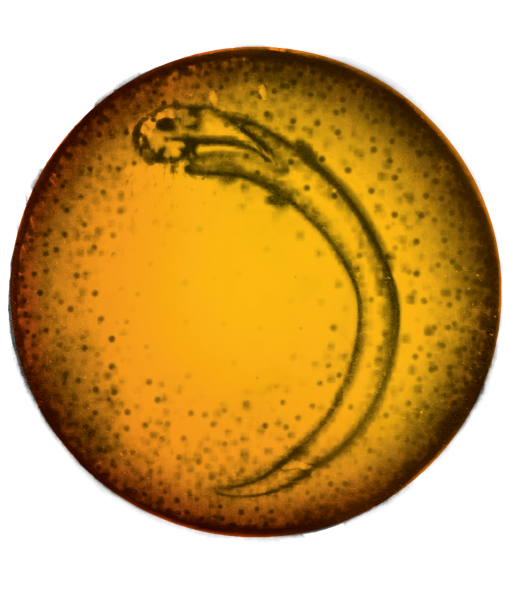
Egg
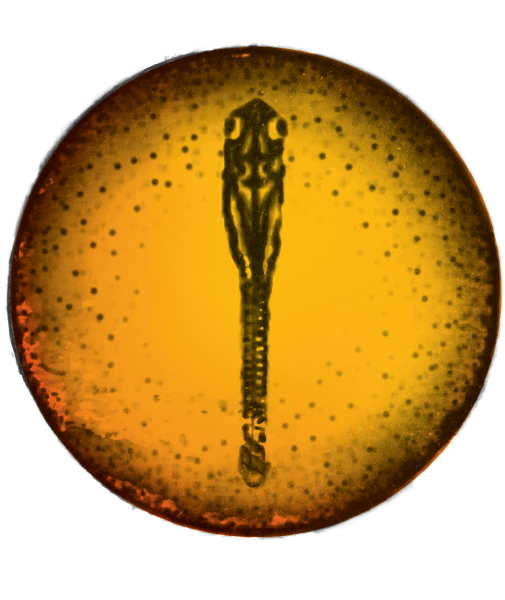
Day 18
After eighteen days, the different organs have started developing and we clearly see where the brain and eyes are to be located.
Egg
Day 30
After thirty days, the eyes have taken shape, the gills are visible, and the brain is under rapid development.
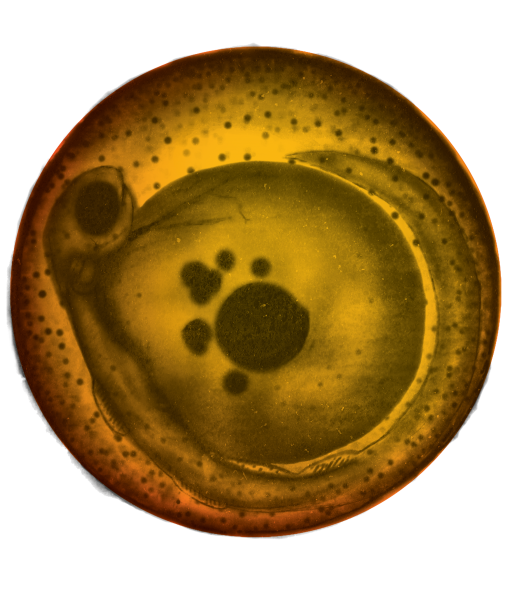
RAS
Yolk-sac fry
Yolk-sac fry
About 60 days post fertilization the egg hatches, and out comes a small swimming fry. The attached yolk-sac is stacked with all the nutrients the small fry needs to survive the first weeks after hatching. When the yolk-sac is empty, it will start feeding on its own.

Parr
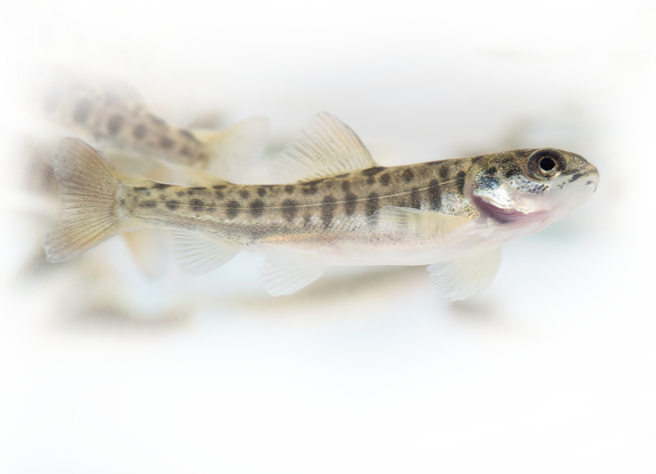
Parr
When the yolk-sac has been emptied, the small fry are moved to larger tanks, where they start feeding. In these containers, they evolve into parr. The parr is easily recognized by the dark patches on the skin. In aquaculture, this stage will last for about a year. When the year has passed, the parr will have grown to about 10 centimetres long, beginning a process called smoltification. Now, big changes occur, transforming the salmon into a saltwater fish.
Smolt
Smolt
Through smoltification, the fish changes appearance, behavior and characteristics. From being solitary, guarding is territory, the smolt transforms into a schooling fish, thriving in the company of others. At the same time, significant changes occur inside the body, allowing the transition from freshwater to saltwater. Now, the smolt is ready for a life in the marine farms.
Click on the smolt to see how the salmon evolves through smoltificaton.
Smolt
Skin
In natural conditions, the parr’s appearance makes for good camouflage on the riverbanks. It has a yellow-brown belly and a dark back. When in the ocean, the salmon stays closer to the surface.
For camouflage, its underside is light, and its back is dark. These colors make the fish more difficult to spot, both from underneath, against the sky, and from above, looking down towards the bottom.
Smolt
Shape
The body shape changes continuously during smoltification. It becomes thinner and more streamlined. Inside the fish, the volume of the swim-bladder increases to improve buoyancy.
The changes occur because the salmon is getting ready for life as a schooling fish. This lifestyle requires buoyancy and a body built for speed!
Smolt
Gills
The most important transformations of smoltificaition are in the gills, kidneys and intestine. These organs are essential for the intake and balance of freshwater and salt.
Freshwater fish must extract salts from the water they drink, whereas in the ocean, the challenge is quite the opposite. Here, the fish must excrete the salt they drink.
Maturing Fish
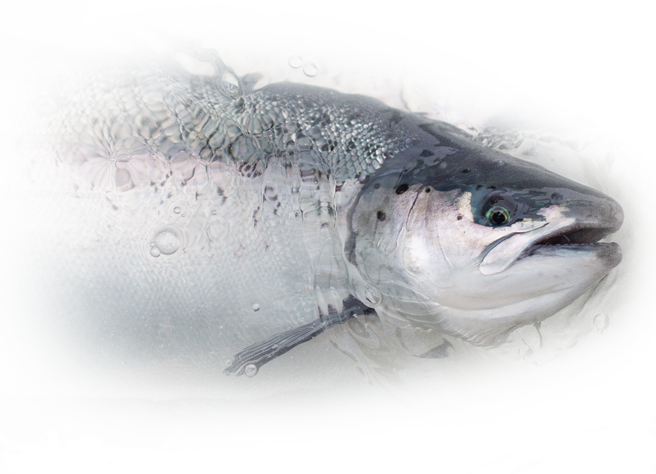
Maturing Fish
In marine aquaculture, we use a number of terms for the salmon while they are in the pens. You might come across the words matfisk, food fish and table fish. All they are referring to are the quickly growing salmon in the sea farms. Farmed salmon take about 12 to 20 months from when they placed in the pens, to when they reach harvestable sizes between four and six kilos. At this point, they are carefully transported in well boats to the processing facility. After processing, the salmon is transported to customers across the world – as a delicious, healthy and eye-catching meal.



